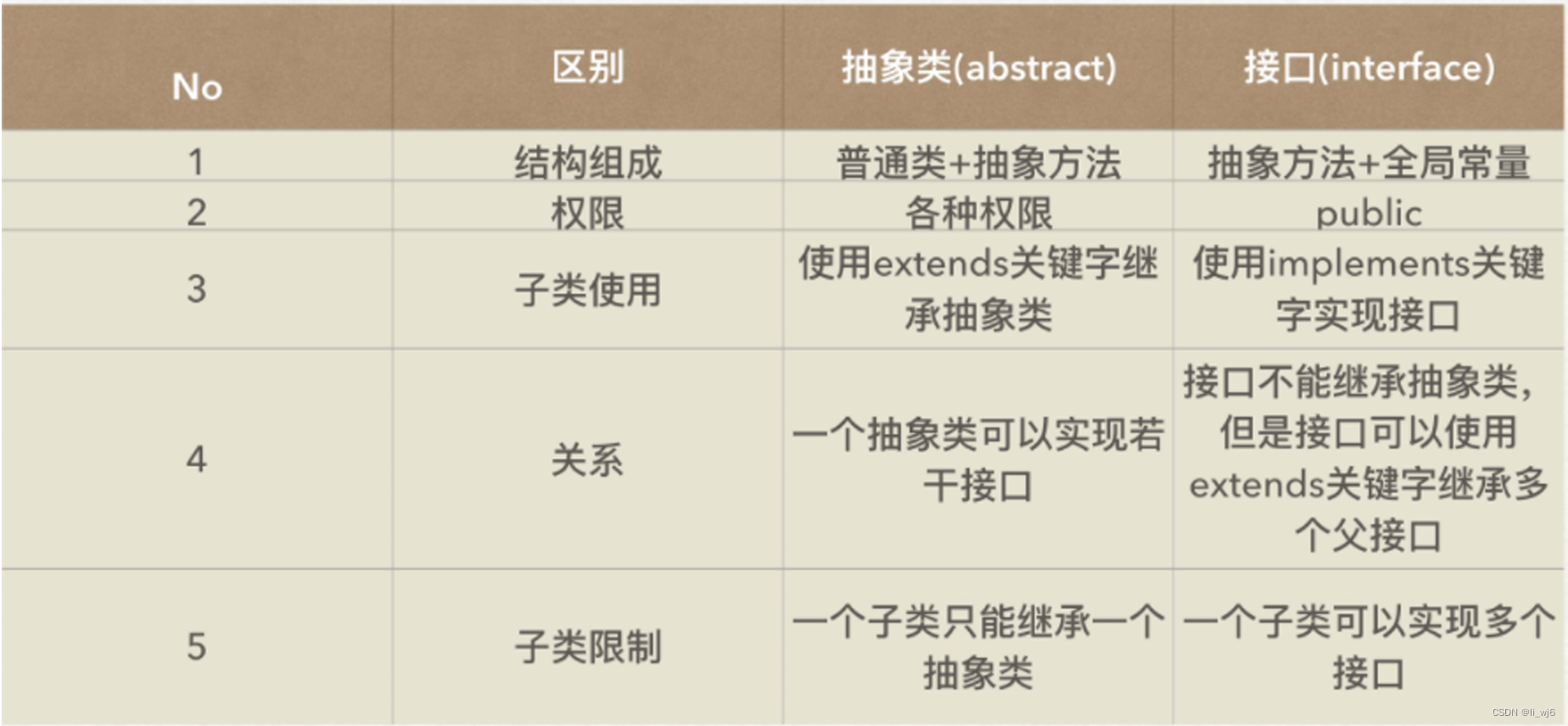DBCP组件
许多Apache项目支持与关系型数据库进行交互。为每个用户创建一个新连接可能很耗时(通常需要多秒钟的时钟时间),以执行可能需要毫秒级时间的数据库事务。对于一个公开托管在互联网上的应用程序,在同时在线用户数量可能非常大的情况下,为每个用户打开一个连接可能是不可行的。因此,开发人员通常希望在所有当前应用程序用户之间共享一组“池化”的打开连接。在任何给定时间实际执行请求的用户数量通常只是活跃用户总数的非常小的百分比,在请求处理期间是唯一需要数据库连接的时间。应用程序本身登录到DBMS,并在内部处理任何用户账户问题。
已经有几个数据库连接池可用,包括Apache产品内部和其他地方。这个Commons包提供了一个机会,来协调创建和维护一个高效、功能丰富的包,以Apache许可证发布。
commons-dbcp2依赖于commons-pool2中的代码,以提供底层的对象池机制。
不同版本
DBCP现在有四个不同的版本,支持不同版本的JDBC。
它的工作原理如下:
开发中
DBCP 2.5.0及以上版本在Java 8(JDBC 4.2)及以上版本下编译和运行。
DBCP 2.4.0在Java 7(JDBC 4.1)及以上版本下编译和运行。
运行中
应用程序运行在Java 8及以上版本的情况下,应使用DBCP 2.5.0及以上版本的二进制文件。 应用程序在Java 7下运行时应使用DBCP 2.4.0的二进制文件。 DBCP 2基于Apache Commons Pool,并提供了与DBCP 1.x相比性能增强、JMX支持以及许多其他新功能。升级到2.x的用户应该注意到Java包名称已更改,以及Maven坐标已更改,因为DBCP 2.x与DBCP 1.x不是二进制兼容的。用户还应该注意,一些配置选项(例如maxActive到maxTotal)已更名以与Commons Pool使用的新名称对齐。
入门例子
您可以从我们的下载页面下载源代码和二进制文件。
或者,您可以从中央 Maven 存储库中提取它:
maven 引入
<dependency><groupId>org.apache.commons</groupId><artifactId>commons-dbcp2</artifactId><version>2.9.0</version>
</dependency>代码
https://github.com/apache/commons-dbcp/tree/HEAD/doc
BasicDataSourceExample
这个是最基本的例子,不涉及任何池化能力。
import java.sql.Connection;
import java.sql.ResultSet;
import java.sql.SQLException;
import java.sql.Statement;import javax.sql.DataSource;//
// Here are the dbcp-specific classes.
// Note that they are only used in the setupDataSource
// method. In normal use, your classes interact
// only with the standard JDBC API
//
import org.apache.commons.dbcp2.BasicDataSource;//
// Here's a simple example of how to use the BasicDataSource.
////
// Note that this example is very similar to the PoolingDriver
// example.//
// To compile this example, you'll want:
// * commons-pool-2.3.jar
// * commons-dbcp-2.1.jar
// in your classpath.
//
// To run this example, you'll want:
// * commons-pool-2.3.jar
// * commons-dbcp-2.1.jar
// * commons-logging-1.2.jar
// in your classpath.
//
//
// Invoke the class using two arguments:
// * the connect string for your underlying JDBC driver
// * the query you'd like to execute
// You'll also want to ensure your underlying JDBC driver
// is registered. You can use the "jdbc.drivers"
// property to do this.
//
// For example:
// java -Djdbc.drivers=org.h2.Driver \
// -classpath commons-pool2-2.3.jar:commons-dbcp2-2.1.jar:commons-logging-1.2.jar:h2-1.3.152.jar:. \
// BasicDataSourceExample \
// "jdbc:h2:~/test" \
// "SELECT 1"
//
public class BasicDataSourceExample {public static void main(String[] args) {// First we set up the BasicDataSource.// Normally this would be handled auto-magically by// an external configuration, but in this example we'll// do it manually.//System.out.println("Setting up data source.");DataSource dataSource = setupDataSource(args[0]);System.out.println("Done.");//// Now, we can use JDBC DataSource as we normally would.//Connection conn = null;Statement stmt = null;ResultSet rset = null;try {System.out.println("Creating connection.");conn = dataSource.getConnection();System.out.println("Creating statement.");stmt = conn.createStatement();System.out.println("Executing statement.");rset = stmt.executeQuery(args[1]);System.out.println("Results:");int numcols = rset.getMetaData().getColumnCount();while(rset.next()) {for(int i=1;i<=numcols;i++) {System.out.print("\t" + rset.getString(i));}System.out.println("");}} catch (SQLException e) {e.printStackTrace();} finally {try {if (rset != null)rset.close();} catch (Exception e) {}try {if (stmt != null)stmt.close();} catch (Exception e) {}try {if (conn != null)conn.close();} catch (Exception e) {}}}public static DataSource setupDataSource(String connectURI) {BasicDataSource ds = new BasicDataSource();ds.setDriverClassName("org.h2.Driver");ds.setUrl(connectURI);return ds;}public static void printDataSourceStats(DataSource ds) {BasicDataSource bds = (BasicDataSource) ds;System.out.println("NumActive: " + bds.getNumActive());System.out.println("NumIdle: " + bds.getNumIdle());}public static void shutdownDataSource(DataSource ds) throws SQLException {BasicDataSource bds = (BasicDataSource) ds;bds.close();}
}PoolingDataSourceExample
这里的 datasource 是池化的。
import javax.sql.DataSource;
import java.sql.Connection;
import java.sql.Statement;
import java.sql.ResultSet;
import java.sql.SQLException;//
// Here are the dbcp-specific classes.
// Note that they are only used in the setupDataSource
// method. In normal use, your classes interact
// only with the standard JDBC API
//
import org.apache.commons.pool2.ObjectPool;
import org.apache.commons.pool2.impl.GenericObjectPool;
import org.apache.commons.dbcp2.ConnectionFactory;
import org.apache.commons.dbcp2.PoolableConnection;
import org.apache.commons.dbcp2.PoolingDataSource;
import org.apache.commons.dbcp2.PoolableConnectionFactory;
import org.apache.commons.dbcp2.DriverManagerConnectionFactory;//
// Here's a simple example of how to use the PoolingDataSource.
////
// Note that this example is very similar to the PoolingDriver
// example. In fact, you could use the same pool in both a
// PoolingDriver and a PoolingDataSource
////
// To compile this example, you'll want:
// * commons-pool2-2.3.jar
// * commons-dbcp2-2.1.jar
// in your classpath.
//
// To run this example, you'll want:
// * commons-pool2-2.3.jar
// * commons-dbcp2-2.1.jar
// * commons-logging-1.2.jar
// * the classes for your (underlying) JDBC driver
// in your classpath.
//
// Invoke the class using two arguments:
// * the connect string for your underlying JDBC driver
// * the query you'd like to execute
// You'll also want to ensure your underlying JDBC driver
// is registered. You can use the "jdbc.drivers"
// property to do this.
//
// For example:
// java -Djdbc.drivers=org.h2.Driver \
// -classpath commons-pool2-2.3.jar:commons-dbcp2-2.1.jar:commons-logging-1.2.jar:h2-1.3.152.jar:. \
// PoolingDataSourceExample \
// "jdbc:h2:~/test" \
// "SELECT 1"
//
public class PoolingDataSourceExample {public static void main(String[] args) {//// First we load the underlying JDBC driver.// You need this if you don't use the jdbc.drivers// system property.//System.out.println("Loading underlying JDBC driver.");try {Class.forName("org.h2.Driver");} catch (ClassNotFoundException e) {e.printStackTrace();}System.out.println("Done.");//// Then, we set up the PoolingDataSource.// Normally this would be handled auto-magically by// an external configuration, but in this example we'll// do it manually.//System.out.println("Setting up data source.");DataSource dataSource = setupDataSource(args[0]);System.out.println("Done.");//// Now, we can use JDBC DataSource as we normally would.//Connection conn = null;Statement stmt = null;ResultSet rset = null;try {System.out.println("Creating connection.");conn = dataSource.getConnection();System.out.println("Creating statement.");stmt = conn.createStatement();System.out.println("Executing statement.");rset = stmt.executeQuery(args[1]);System.out.println("Results:");int numcols = rset.getMetaData().getColumnCount();while(rset.next()) {for(int i=1;i<=numcols;i++) {System.out.print("\t" + rset.getString(i));}System.out.println("");}} catch (SQLException e) {e.printStackTrace();} finally {try {if (rset != null)rset.close();} catch (Exception e) {}try {if (stmt != null)stmt.close();} catch (Exception e) {}try {if (conn != null)conn.close();} catch (Exception e) {}}}// 这里的 datasource 是池化的。public static DataSource setupDataSource(String connectURI) {//// First, we'll create a ConnectionFactory that the// pool will use to create Connections.// We'll use the DriverManagerConnectionFactory,// using the connect string passed in the command line// arguments.//ConnectionFactory connectionFactory =new DriverManagerConnectionFactory(connectURI, null);//// Next we'll create the PoolableConnectionFactory, which wraps// the "real" Connections created by the ConnectionFactory with// the classes that implement the pooling functionality.//PoolableConnectionFactory poolableConnectionFactory =new PoolableConnectionFactory(connectionFactory, null);//// Now we'll need a ObjectPool that serves as the// actual pool of connections.//// We'll use a GenericObjectPool instance, although// any ObjectPool implementation will suffice.//ObjectPool<PoolableConnection> connectionPool =new GenericObjectPool<>(poolableConnectionFactory);// Set the factory's pool property to the owning poolpoolableConnectionFactory.setPool(connectionPool);//// Finally, we create the PoolingDriver itself,// passing in the object pool we created.//PoolingDataSource<PoolableConnection> dataSource =new PoolingDataSource<>(connectionPool);return dataSource;}
}PoolingDriverExample.java
这里用的是 dbcp 的驱动实现池化的?
import java.sql.Connection;
import java.sql.DriverManager;
import java.sql.ResultSet;
import java.sql.SQLException;
import java.sql.Statement;import org.apache.commons.dbcp2.ConnectionFactory;
import org.apache.commons.dbcp2.DriverManagerConnectionFactory;
import org.apache.commons.dbcp2.PoolableConnection;
import org.apache.commons.dbcp2.PoolableConnectionFactory;
import org.apache.commons.dbcp2.PoolingDriver;
//
// Here are the dbcp-specific classes.
// Note that they are only used in the setupDriver
// method. In normal use, your classes interact
// only with the standard JDBC API
//
import org.apache.commons.pool2.ObjectPool;
import org.apache.commons.pool2.impl.GenericObjectPool;//
// Here's a simple example of how to use the PoolingDriver.
//// To compile this example, you'll want:
// * commons-pool-2.3.jar
// * commons-dbcp-2.1.jar
// in your classpath.
//
// To run this example, you'll want:
// * commons-pool-2.3.jar
// * commons-dbcp-2.1.jar
// * commons-logging-1.2.jar
// in your classpath.
//
// Invoke the class using two arguments:
// * the connect string for your underlying JDBC driver
// * the query you'd like to execute
// You'll also want to ensure your underlying JDBC driver
// is registered. You can use the "jdbc.drivers"
// property to do this.
//
// For example:
// java -Djdbc.drivers=org.h2.Driver \
// -classpath commons-pool2-2.3.jar:commons-dbcp2-2.1.jar:commons-logging-1.2.jar:h2-1.3.152.jar:. \
// PoolingDriverExample \
// "jdbc:h2:~/test" \
// "SELECT 1"
//
public class PoolingDriverExample {public static void main(String[] args) {//// First we load the underlying JDBC driver.// You need this if you don't use the jdbc.drivers// system property.//System.out.println("Loading underlying JDBC driver.");try {Class.forName("org.h2.Driver");} catch (ClassNotFoundException e) {e.printStackTrace();}System.out.println("Done.");//// Then we set up and register the PoolingDriver.// Normally this would be handled auto-magically by// an external configuration, but in this example we'll// do it manually.//System.out.println("Setting up driver.");try {setupDriver(args[0]);} catch (Exception e) {e.printStackTrace();}System.out.println("Done.");//// Now, we can use JDBC as we normally would.// Using the connect string// jdbc:apache:commons:dbcp:example// The general form being:// jdbc:apache:commons:dbcp:<name-of-pool>//Connection conn = null;Statement stmt = null;ResultSet rset = null;try {System.out.println("Creating connection.");conn = DriverManager.getConnection("jdbc:apache:commons:dbcp:example");System.out.println("Creating statement.");stmt = conn.createStatement();System.out.println("Executing statement.");rset = stmt.executeQuery(args[1]);System.out.println("Results:");int numcols = rset.getMetaData().getColumnCount();while(rset.next()) {for(int i=1;i<=numcols;i++) {System.out.print("\t" + rset.getString(i));}System.out.println("");}} catch (SQLException e) {e.printStackTrace();} finally {try {if (rset != null)rset.close();} catch (Exception e) {}try {if (stmt != null)stmt.close();} catch (Exception e) {}try {if (conn != null)conn.close();} catch (Exception e) {}}// Display some pool statisticstry {printDriverStats();} catch (Exception e) {e.printStackTrace();}// closes the pooltry {shutdownDriver();} catch (Exception e) {e.printStackTrace();}}public static void setupDriver(String connectURI) throws Exception {//// First, we'll create a ConnectionFactory that the// pool will use to create Connections.// We'll use the DriverManagerConnectionFactory,// using the connect string passed in the command line// arguments.//ConnectionFactory connectionFactory =new DriverManagerConnectionFactory(connectURI, null);//// Next, we'll create the PoolableConnectionFactory, which wraps// the "real" Connections created by the ConnectionFactory with// the classes that implement the pooling functionality.//PoolableConnectionFactory poolableConnectionFactory =new PoolableConnectionFactory(connectionFactory, null);//// Now we'll need a ObjectPool that serves as the// actual pool of connections.//// We'll use a GenericObjectPool instance, although// any ObjectPool implementation will suffice.//ObjectPool<PoolableConnection> connectionPool =new GenericObjectPool<>(poolableConnectionFactory);// Set the factory's pool property to the owning poolpoolableConnectionFactory.setPool(connectionPool);//// Finally, we create the PoolingDriver itself...//Class.forName("org.apache.commons.dbcp2.PoolingDriver");PoolingDriver driver = (PoolingDriver) DriverManager.getDriver("jdbc:apache:commons:dbcp:");//// ...and register our pool with it.//driver.registerPool("example", connectionPool);//// Now we can just use the connect string "jdbc:apache:commons:dbcp:example"// to access our pool of Connections.//}public static void printDriverStats() throws Exception {PoolingDriver driver = (PoolingDriver) DriverManager.getDriver("jdbc:apache:commons:dbcp:");ObjectPool<? extends Connection> connectionPool = driver.getConnectionPool("example");System.out.println("NumActive: " + connectionPool.getNumActive());System.out.println("NumIdle: " + connectionPool.getNumIdle());}public static void shutdownDriver() throws Exception {PoolingDriver driver = (PoolingDriver) DriverManager.getDriver("jdbc:apache:commons:dbcp:");driver.closePool("example");}
}




